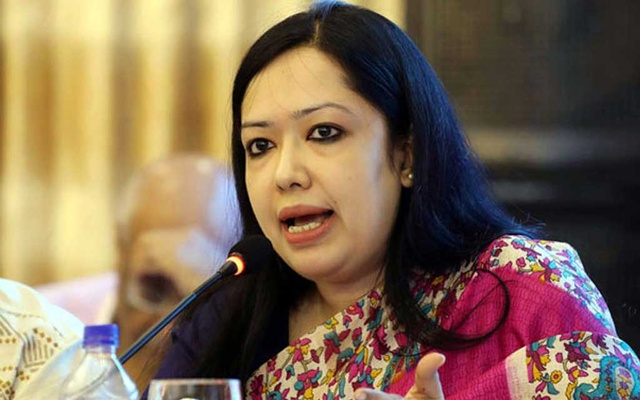The Daily Star

Last update on: Sat Apr 26, 2025 03:26 PM

Development aid as we know might as well be a corpse we are trying to re-animate, without much luck or success. The latest slashing of the overseas aid budget coming from the United States, by shuttering USAID, the primary agency for channelling American foreign aid, is being considered by many an extinction event for the aid sector. To put things into perspective, the US government is the single-largest aid donor in the world, accounting for more than 40 percent of all humanitarian aid in 2024. The fate of USAID may still be decided in a bitter and long-drawn court battle, but it has not stopped the Trump administration from cancelling 90 percent of USAID’s existing contracts, all but making the agency’s funding commitments utterly irrelevant.
Other global players in foreign aid—although less callously, but succumbing to pressures to beef up security in their own backyard—are cutting back on their development spending as well. Britain, in a bid to raise defence spending, decided to lean into the overseas development fund. France’s cash-poor minority government is considering cutting aid budget by at least a third. The Germans, recently coming to spotlight by mobilising considerable resources behind climate financing, are also becoming thrifty. So, although the American approach is needlessly chaotic and borderline inhumane by cutting funding support from HIV patients and people dependent on food aid, this penurious era of development funding is an alarming trend for the sector.
It begs the question: what is the future of foreign aid and what happens to people and countries dependent on it?
The roots of modern foreign aid can be traced back to the middle of the 20th century, when aid agencies were formed to support the newly independent colonies of the Western powers. During the Cold War, aid was also used as a tool to prevent the countries of the global south from vacillating towards the Soviet sphere of influence. Afterwards, bilateral foreign aid was often linked to democratic reforms as policymakers in the West believed that autocratic leaders were holding the countries back in poverty. However, in the early 2000s, aid spending took a more universalist approach—some might remember the adoption of the Millennium Development Goals by the UN—focusing on human capital and increasing investment in education and public health. From 2004 to 2014, aid spending increased by 75 percent, leading to growth in the so-called non-profit industrial complex.
But even after significant investments, foreign aid failed to deliver the economic holy grail of growth. The 78 poorest economies in the world experienced slower growth from 2014 to 2024 compared to the decade leading up to 1970 when foreign aid was emerging. Researchers have found little to no evidence that foreign aid leads to broad-based economic growth on a national scale, which was also confirmed by the World Bank. But then are we asking the wrong question? Is the economic growth of a country really the objective of foreign aid? Aid should focus on achievable goals: helping specific populations in targeted ways, rather than chasing the elusive overhaul of the country’s economy.
Bangladesh has had an interesting relationship with foreign aid. It supported large-scale immunisation programmes in the 1980s and 1990s, bolstering the public health infrastructure and acting as a critical enabler of positive health outcomes in areas of child and maternal mortality, child health, vaccination programmes, and curbing the impact of infectious diseases such as tuberculosis and malaria. It also gave rise to huge development organisations, such as Grameen, BRAC, ASA and Proshika, that stepped in to fill the gap where state capacity ended. Critics of foreign aid argue that it is a dangerous bargain, which enables the government to abdicate its core responsibilities in favour of NGOs, who due to funding dependence can often be tied to the interest of foreign nations and individuals. Be that as it may, the history of this fairly unique government-NGO partnership in Bangladesh is replete with examples of success in the fields of health, education, sanitation and economic development. In terms of targeted support to a vulnerable group: one of the most transformational models that came out of Bangladesh is perhaps the Graduation Approach. Nobel Laureates Abhijeet Banerjee and Esther Duflo extensively researched this approach pioneered by BRAC and found it can reliably lift people out of extreme poverty and keep them from falling into poverty again. Yet, the scepticism towards foreign aid and the way it is provided is very much grounded in the reality of the aid structure.
Winston Churchill famously said, “Never let a good crisis go to waste.” Perhaps the development sector can also take this crisis as an opportunity to reflect and change the way it operates. It is fair to say that short-term project-based approaches, so commonplace in international development, failed to generate the sort of transformational change people expect from impactful programmes. A five-year project is hardly an answer to generational problems like climate change, which would require widespread global cooperation and very targeted support to countries like Bangladesh that are at the forefront of climate shocks. The same thinking can be applied to development funding. The funding must provide more catalytic longer-term funding to organisations that are running impactful programmes on the ground. Another idea, gaining steam, is to improve coordination among countries to ensure that the richest individuals and large multinational corporations pay their fair share of taxes, which could easily fill the gap left by the US. Estimates indicate that imposing a minimum annual tax of two percent on billionaires’ wealth could generate up to $250 billion per year. The aid sector must show its willingness to shift away from its over-reliance on directives from foreign donors and instead focus on designing evidence-based, long-term initiatives that drive systemic change, rather than continuously moving from one project to another.
The cuts throughout the sector, precipitated by a rightward shift in governments globally, and the increasing perceived security risk is going to leave blood in the water. How the international development sector responds to these monumental changes would test the strength of character of its leaders and how adaptive the organisations and its people are. The moment might be in favour of populist leaders looking at the world through a zero-sum lens, but it doesn’t have to remain that way forever. The rest of the world doesn’t need to follow the US example. There is still a place for global cooperation and concerted efforts to ensure that the most vulnerable people are not left behind the veil of jingoistic posturing. For better or worse, the rest of the international community will have to chart their own path going forward, without hoping for isolationist leaders to change their worldview anytime soon.
Rakib Avi is a development worker and a graduate research assistant at the University of Georgia.
Views expressed in this article are the author’s own.











